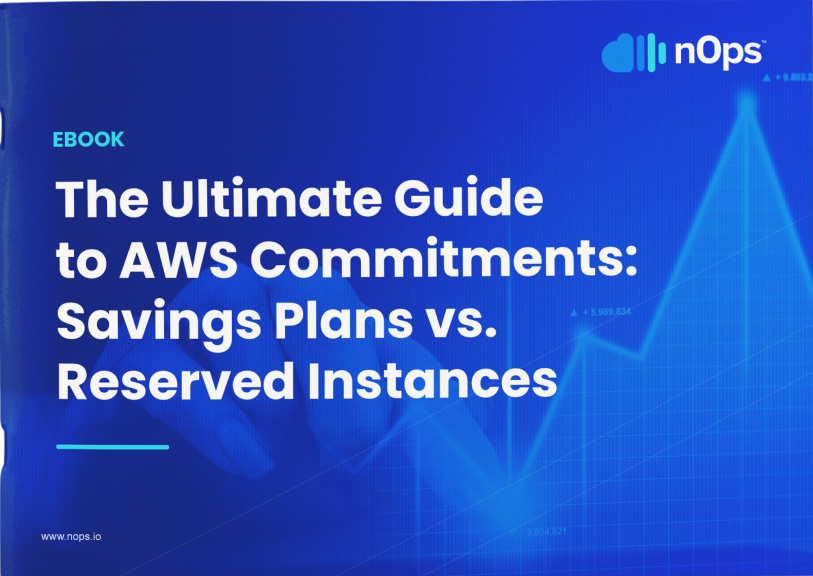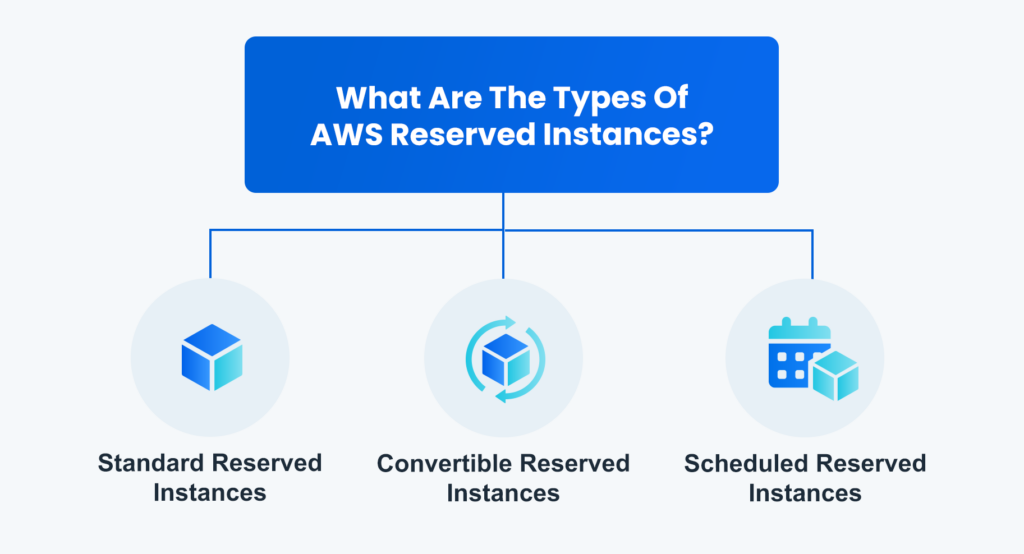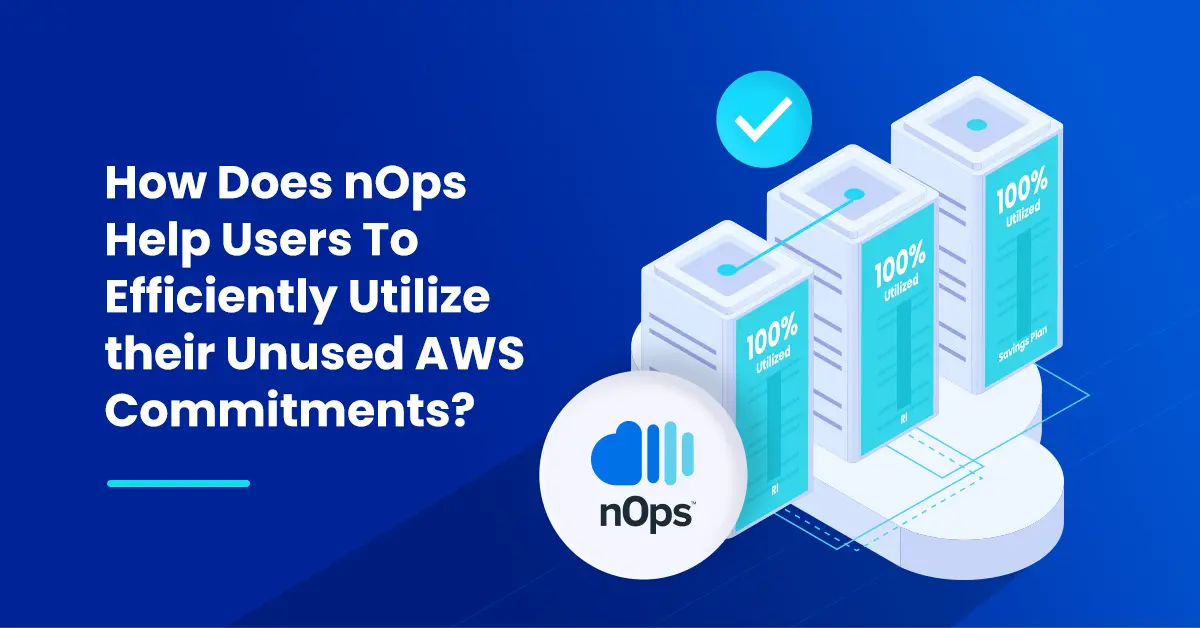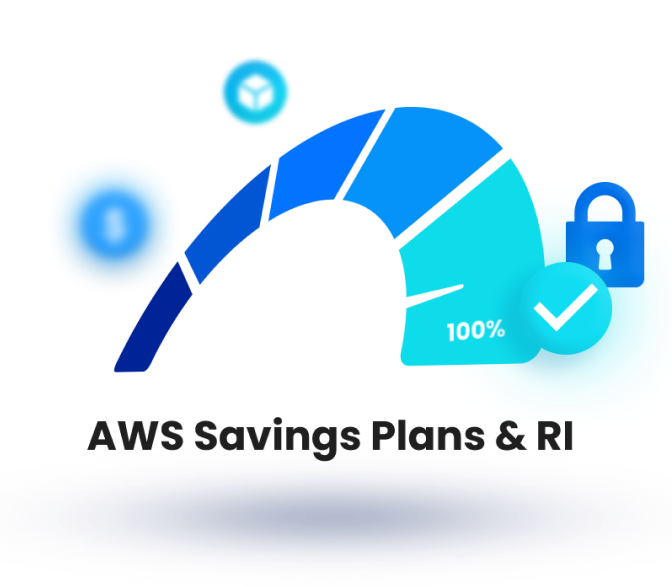- Blog
- Commitment Management
- AWS Savings Plan VS Reserved Instances: The Complete Guide
AWS Savings Plan VS Reserved Instances: The Complete Guide
Last Updated: February 7, 2025, Commitment Management
AWS Reserved Instances (RI) and AWS Savings Plans (SP) are pricing models offering lower prices than On-Demand pricing in exchange for a specific usage commitment (measured in $/hour) for a one- or three-year period.
However, forecasting commitments is an art. In the dynamic world of cloud infrastructure, systems are constantly evolving — your team is constantly modernizing and rightsizing, so the overall cloud cost fluctuates. If you commit too heavily, every hour you’re paying for unused capacity. But if you under-commit, you’ll have to pay the On-Demand premium for additional resources.
This article covers the differences between Reserved Instances and Savings Plans and how to choose the right option to lower your AWS bill.
Types of Saving Plans
Both Savings Plans provide a flexible pricing model offering lower prices than On-Demand pricing in exchange for a specific usage commitment (measured in $/hour) for a one- or three-year period.
AWS offers three types of Savings Plans: Compute, EC2, and SageMaker. Let’s compare.
Compute Savings Plans
Compute Savings Plans are the most flexible commitment option. They allow you to apply usage across Amazon EC2, (regardless of instance family, size, AZ, region, OS, or tenancy), AWS Lambda, and AWS Fargate.
For example, you could change a c4.large instance in Ireland to an t4g.16xl instance in London and still receive the Savings Plan discount.
EC2 Instance Savings Plans
EC2 Instance Savings Plans provides the lowest prices, with savings up to 72% (compared to 66% for Compute SP).
However, you need to commit to a specified region and instance family, though you can change instance size, OS, and tenancy.
SageMaker Savings Plans

SageMaker Savings Plans will apply to any ML instance or size, across any region, without manual modifications required.
If you have a consistent amount of Amazon SageMaker instance usage (measured in $/hour), and use multiple SageMaker components or expect your technology configuration (e.g. instance family, region) to change over time, SageMaker Savings Plans make it simpler to maximize your savings while providing flexibility to change underlying technology configuration based on application needs or new innovation.
How are Savings Plans applied?
Savings Plans apply to your AWS usage after any EC2 Reserved Instances (RIs) you have are applied, because they are broader. Following the same principle, EC2 Savings Plans are applied before Compute Savings Plans.
Savings Plans are applied first to the usage of the purchasing account, then to other accounts within the Consolidated Billing Family. This is known as account affinity and is important to keep in mind.
Savings Plans prioritize covering usage with the highest discount rate(s) first, after purchasing affinity. They will be applied until all eligible usage is accounted for, or until your commitment is met. Any remaining usage will be charged at the On-Demand rate. Savings Plans will apply their discount at a lower discount for usage within the purchasing account before it will “float” to another account to cover usage. This is why it’s a best practice to either buy Savings Plans from an empty account specific for this purpose, or the Root/Management account if there’s no infrastructure running in it.
The Ultimate Guide to AWS Commitments

EC2 Savings Plan comparison
Here is a quick comparison of different commitment options to consider.
|
|
EC2 Instances Savings Plans |
Compute Savings Plans |
SageMaker Savings Plans |
|
Applicable to |
EC2 compute only |
EC2 compute, Lambda, and/or Fargate |
SageMaker |
|
Commitment term |
1 year, 3 years |
1 year, 3 years |
1 year, 3 years |
|
Best case scenario savings |
72% |
66% |
64% |
|
Payment Options |
All Upfront, Partial Upfront, and No Upfront |
All Upfront, Partial, and No Upfront |
All Upfront, Partial, and No Upfront |
|
Instance Family |
Fixed |
Any |
Any |
|
Instance Size |
Any |
Any |
Any |
|
Instance Operating System |
Any |
Any |
N/A (SageMaker instances come with preconfig. environments) |
|
Instance AZ |
Any |
Any |
Any |
|
Instance Tenancy |
Any |
Any |
N/A |
|
Need to reserve capacity? |
No |
No |
No |
Advantages of AWS Savings Plans
-
Compute Savings Plans can apply to any instance, maximizing the value and flexibility of the plan you purchase.
-
Savings Plans offer the flexibility to make infrastructure modifications while still receiving discounts.
-
A Savings Plan automatically applies to eligible usage, regardless of changes to your infrastructure.
-
You purchase Savings Plans on a dollar-per-hour basis, not per instance. As a result, SP allows you to purchase compute capacity for as little as a fraction of a cent per hour – one tenth of a cent per hour, to be exact ($0.001/hr).
-
Savings Plans offer multiple payment options, meaning you have the flexibility to pay upfront or monthly (with higher discounts for paying upfront).
-
Savings Plans can be scheduled for future purchase, allowing them to apply automatically at a later date (called “queuing”).
-
Savings Plans “float”, meaning they can be applied not just to the purchasing account, but to other linked AWS accounts.
Reserved Instances

AWS offers two types of RIs: Standard and Convertible. Let’s compare:
Standard Reserved Instances vs Convertible Reserved Instances
Standard RIs offer the highest discount (up to 75% off On-Demand instances) and are suited to steady-state workloads with predictable usage patterns. They require a commitment to a specific instance family and region, and you can’t modify the instance class or operating system after purchase.
Convertible RIs offer less of a discount than Standard RIs (up to 54% off On-Demand), but allow greater flexibility. If your application’s needs change, you can exchange Convertible RIs for other Convertible RIs to cover different families, operating systems, or tenancies, as long as they are of equal or greater value.
Scheduling Reserved Instances
Scheduled RIs are available to launch within the time windows you reserve. This option allows you to match your capacity reservation to a predictable recurring schedule that only requires a fraction of a day, a week, or a month. For example, if you have batch processing jobs that need to run every Monday from 1 PM to 5 PM, you can reserve capacity specifically for that time.
Regional and Zonal Reserved Instances
RIs either have a regional or zonal scope. Regional RIs apply to instances in a particular AWS region within the same family (regardless of size).
Zonal RIs apply to instances in a particular Availability Zone. They reserve capacity in the specified Availability Zone, while Regional RIs do not.
Savings Plans and Reserved Instance Comparisons
Here is a quick comparison of different Savings Plans and Reserved Instances to consider.
|
|
Standard Reserved Instances |
Convertible Reserved Instances |
EC2 Instances Savings Plans |
Compute Savings Plans |
|
Applicable to |
EC2 only |
EC2 only |
EC2 only |
EC2, Lambda, & Fargate |
|
Commitment term |
1 year, 3 years |
1 year, 3 years |
1 year, 3 years |
1 year, 3 years |
|
Best case scenario savings |
75% |
54% |
72% |
66% |
|
Payment Options |
All Upfront, Partial, and No Upfront |
All Upfront, Partial, and No Upfront |
All Upfront, Partial, and No Upfront |
All Upfront, Partial, and No Upfront |
|
Instance Family |
Fixed |
Any |
Fixed |
Any |
|
Instance Size |
Fixed, except for regional scopes that use Linux/Unix |
Any |
Any |
Any |
|
Instance Operating System |
Fixed |
Any |
Any |
Any |
|
Instance AZ |
Any (Regional), Fixed (Zonal) |
Any |
Any |
Any |
|
Instance Tenancy |
Fixed |
Any |
Any |
Any |
|
Need to reserve capacity? |
Any (Regional), Fixed (Zonal) |
No |
No |
No |
Advantages of Reserved Instances
-
Standard RIs offer up to a 75% discount on On-Demand pricing
-
RIs provide predictable compute power and pricing over a set period of time, ideal for predictable and consistent workloads
-
Convertible RIs offer the flexibility to change instance size, AZ, scope, networking type and term should your needs change. You still receive a discount, though not as great as for Standard RIs.
-
Standard RIs (though not Convertible RIs, or RIs obtained at a discounted rate) can be sold in the AWS Reserved Marketplace
-
While Savings Plans can only be purchased for EC2, Fargate, and AWS Lambda usage, Reservation models are available for a greater range of services including EC2, RDS, ElastiCache, OpenSearch, Redshift, and DynamoDB.
AWS Savings Plan vs Reserved Instances: which is a more flexible pricing model?
If you’re going to choose only one, AWS generally recommends Savings Plans over Reserved Instances, because they offer similar savings with more flexibility to accommodate your dynamic usage. And, discounts are applied automatically across all components, potentially reducing time and overhead spent on resource management.
A caveats are that fewer resources and services can be covered with Savings Plans, and Savings Plans cannot be resold on the RI marketplace. However, Reserved Instances purchased at a discounted rate (such as through PPA, EDP, or volume tiering) are no longer allowed to be sold on the AWS Marketplace, negating this advantage in many cases.
To maximize your discount with commitments, you can use a mix of Savings Plans and Convertible RIs to accomodate your specific usage needs — though this can get complex.
Forecasting commitments is difficult to do without complete visibility into your cloud usage. And in the dynamic world of cloud infrastructure, systems are constantly evolving as your team modernizes and rightsizes. Predicting usage and knowing if you have the right level and type of commitments requires the right strategies — let’s talk about how to do it well.
How Does nOps Help Users To Efficiently utilize their Unused AWS Commitments?
nOps helps you optimize Reserved Instances (RIs) and Savings Plans automatically, for greater time and cost savings.
- Maximize Discounts: Achieve 30-60% savings by automatically optimizing your compute.
- 100% Utilization of RI and SP: We guarantee that you’ll use all of your nOps-managed commitments — so you don’t risk any wasted spend.
- Time Savings & Simplicity: It just takes a few minutes to onboard and get started with dynamic, hands-off management of your commitments.
If you’d like help navigating the changes, feel free to contact us. You can test our G2 5-star rated commitment management solution out using your AWS account with a guided onboarding or demo with one of our Commitment Management experts.
nOps is entrusted with over two billion dollars of AWS spend, and the platform was recently ranked #1 in G2’s cloud cost management category. Join our customers saving up to 50% by booking a demo today!
Unused Savings Plans, insufficient Spot usage and high On Demand prices drive up AWS bills.
Unused Savings Plans, insufficient Spot usage and high On Demand prices drive up AWS bills.
Copilot ensures all of your usage is discounted to maximize savings hands-fre







